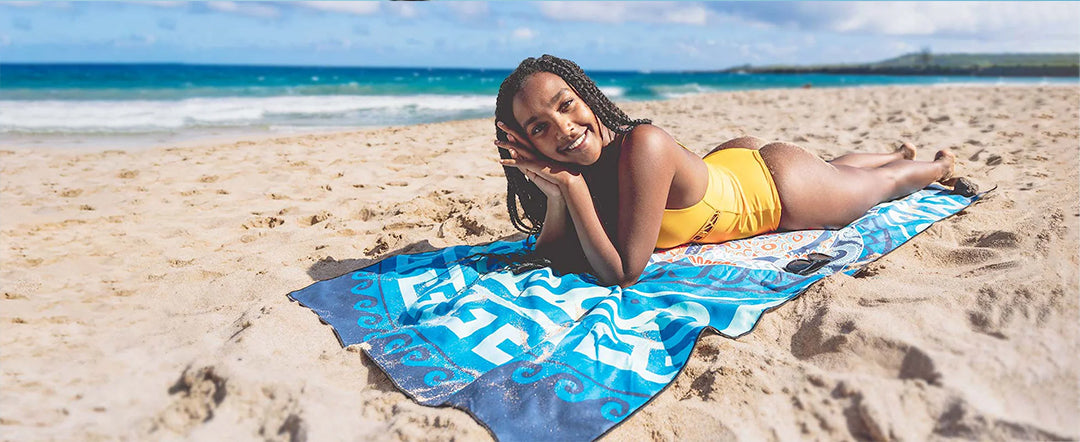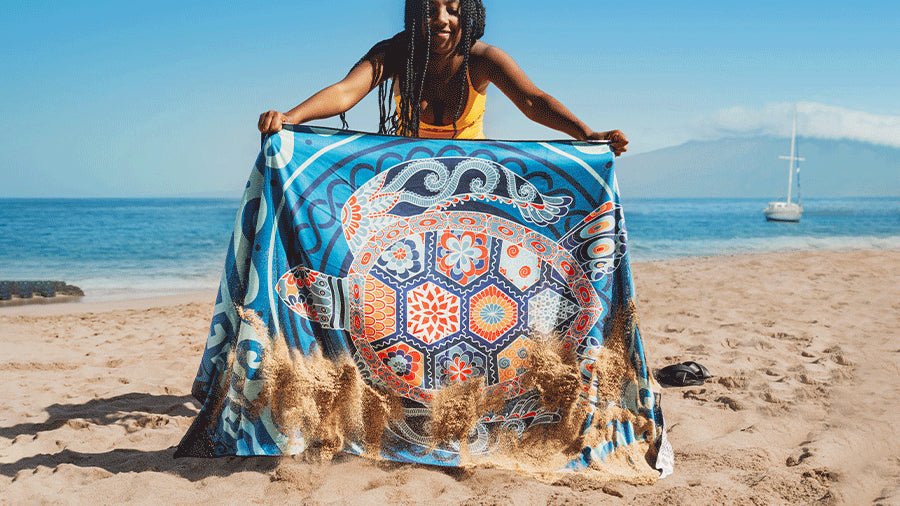Abstract:
Sand can make a day at the beach uncomfortable, but a sand-free beach blanket can solve the problem. In this article, we'll explore how to choose the best sand-free beach blanket, including the materials to look for, key factors to consider when purchasing, a comparison of different materials, and our top recommendations.
1. Understanding the Benefits of Sand-Free Beach Blankets
A day at the beach is always an enjoyable experience, but the sand can be a real nuisance. Sand can stick to your skin, clothes, and beach blanket, making it difficult to relax and enjoy your time in the sun. Fortunately, sand-free beach blankets have become a popular solution to this problem.
Sand-free beach blankets are made of specially engineered materials that prevent sand from sticking to them. Instead of getting trapped in the fibers of the blanket, sand simply falls off or can be easily brushed away. This means that you can enjoy a comfortable and sand-free surface to lay on, without having to constantly shake out your blanket or wipe off sand.
Not only do sand-free beach blankets make for a more enjoyable beach experience, but they also have practical benefits. For example, they are easier to clean than traditional beach blankets, as you can simply shake off any dirt or debris. Additionally, their lightweight and compact design make them easy to carry to and from the beach, and they dry quickly if they get wet.

2. You need to know which materials are used to make sand-free Beach Blankets
- Microfiber: a synthetic material that is very soft and quick-drying.
- Polyester: a synthetic material that is durable and resistant to wrinkles and shrinkage.
- Cotton: a natural material that is soft and comfortable, but may take longer to dry.
- Straw: a natural material that is lightweight and breathable, but may not be as soft as other materials.
- Elm bark: a natural material that is similar to straw in texture and breathability, but may be more durable.
- EVA sponge material: a synthetic material that is soft and quick-drying, but may not be as durable as other materials.
- PVC material: a synthetic material that is easy to clean and quick-drying, but may not be as soft as other materials.
- Rubber cement material: a synthetic material that is easy to clean and very durable, but may not be as soft as other materials.
- Synthetic leather: a synthetic material that is durable and easy to clean, but may not be as soft as other materials.
- Sheepskin fur: a natural material that is very soft and comfortable, but may be difficult to clean and not as durable as synthetic materials.
3. Material Comparison: Which Material is Best for a Sand-Free Beach Blanket?
| Material | Price | Easy to Store | Quick Drying | Softness | Sand Resistance | Durability |
|---|---|---|---|---|---|---|
| Microfiber | Moderate price | Easy to store | Quick drying | Soft | Very good | Not very durable |
| Polyester | Moderate price | Not easily deformed | Average | Average | Poor | Durable |
| Cotton | Moderate price | Not easy to store | Slow | Soft | Average | Durable |
| Straw | Moderate price | Not easy to store | Slow | Not very soft | Very good | Not very durable |
| Elm bark | Moderate price | Not easy to store | Slow | Not very soft | Very good | Quite durable |
| EVA sponge material | Moderate price | Easy to store | Fast | Soft | Average | Not very durable |
| PVC material | Moderate price | Easy to store | Fast | Not very soft | Average | Durable |
| Rubber cement material | Moderate price | Easy to store | Fast | Not very soft | Very good | Durable |
| Synthetic leather | Relatively expensive | Easy to store | Fast | Not very soft | Average | Durable |
| Sheepskin fur | Relatively expensive | Not easy to store | Average | Soft | Poor | Durable |

4. Recommendations: Top Picks for Sand-Free Beach Blankets
If your budget is between $60-120, you can opt for a synthetic leather sand-free beach mat which, apart from being less soft, has competitive performance characteristics. It's worth mentioning that synthetic leather may not have a wide variety of styles to choose from.
If your budget is between $20-50, then undoubtedly the best sand-free beach mat is made of ultra-fine fiber material. Considering the comprehensive comparison of anti-sand performance, drying speed, portability, comfort, and durability, ultra-fine fiber is the best material.
Overall, we recommend the ultra-fine fiber material for a sand-free beach mat. You can get a sand-free beach mat with the highest comprehensive performance on a more economical budget, and there are more styles to choose from, so why not?
If you happen to need a sand-free beach mat, you can visit https://diveblues.com/collections/beach-blankets to find the best sand-free beach mats in various styles.






